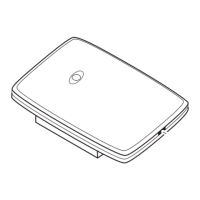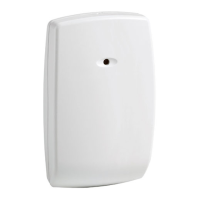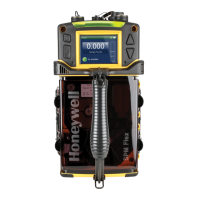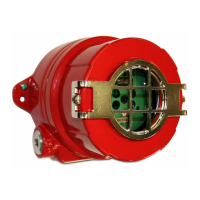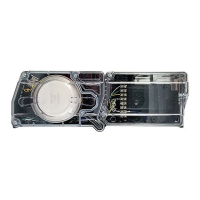Refer to Installation Instructions and diagrams (next page) when installing this product
©2002 IntelliSense. All rights reserved.
IntelliSense is a registered trademark of Honeywell, Inc. - All other
brands mentioned are the trademarks or registered trademarks of their
respective owners. Specifications subject to change without prior notice.
Ê5-051-736-00A>Š
5-051-736-00A 7/02
FlexGuar
®
FG-1625/FG-1625T Glassbreak Detector Su
lemental Information
1. General Information
The FG-1625/FG-1625T glassbreak detector senses the
sound of breaking plate, tempered, laminated, wired,
coated and sealed insulating glass.
These products are both UL and ULC listed.
2. Choosing Mounting Location
The preferred mounting location for the device is on a
wall or ceiling, opposite the protected glass.
For the best detector performance, select a mounting
location that is:
• within 7.6 m (25 feet) of the protected glass;
• within clear view of the protected glass;
• at least 2 m (6.5 feet) from the floor;
• at least 1 m (3.3 feet) from forced air ducts;
• at least 1 m (3.3 feet) from sirens or bells greater
than 5 cm (2 inches) in diameter.
• between the protected glass and any heavy
window coverings that may be present.
Alternatively, when heavy window coverings are
present, the detector can be mounted on the frame
of the window.
Avoid mounting the detector on the same wall as the
protected glass, on free-standing posts or pillars, or in
rooms with noisy equipment (air compressors, bells,
power tools, etc.), if this equipment is operated when
the detector is armed.
3. Testing Mounting Location With 9V Battery
You may test the detector in the desired mounting
location before drilling/wiring.
If the 9V battery cannot
supply sufficient power, the detector will not operate
and the red and green LEDs will flash on/off.
Follow the procedure described in “Testing the
Detector” (next column) to confirm proper operation.
4. Configuring Sensitivity (Range)
DIP switches SENS1 and SENS2 set detector
sensitivity (range), as shown:
SENSITIVITY RANGE * SENS1 SENS2
MAX 7.6m (25 ft)
OFF OFF
MEDIUM 4.6m (15 ft)
ON OFF
LOW 3m (10 ft)
OFF ON
LOWEST 1.5m (5 ft)
ON ON
*Sensitivity must be set to match the distance between
the detector and the protected glass, as verified using
the FG-701 Glassbreak Simulator.
5. Configuring LED Switch
The LATCH and LED DIP switches determine LED
indicator operation.
SWITCH OFF ON
LATCH
Red LED lights for 5
seconds during alarm
Red LED latches ON when
detector goes into alarm
1, 2
LED
LEDs disabled (except for
power up and test mode
3
)
LEDs always enabled
1
Alarm relay timing is not affected by the latched Alarm LED.
2
Reset the Alarm LED by removing/restoring power, or by toggling the
detector in and out of Test Mode.
3
LEDs can be enabled/disabled using FG-701.
6. Enabling Optional Rear Tamper
(FG-1625T only)
The FG-1625T is equipped with a combination normally-
closed (NC) cover and wall tamper switches. Each unit
is shipped with the cover tamper operational, and the
wall tamper disabled.
To enable the rear tamper, remove the plastic tab on the
back of the detector, using needle-nose pliers. The wall
tamper arm will then extend through the hole.
Proceed
with the following mounting instructions to install the wall
tamper screw.
7. Mounting the Detector
NOTE: If ceiling mounted, the end with the hole
(micro-phone end) should face the glass being
protected.
1.
If using optional Wall Tamper (FG-1625T):
Mark the mounting location for the wall tamper
screw based on the final location of the
detector. Then, install the wall tamper screw so
that it will just make contact with the bottom of
the tamper cavity when the unit is mounted.
Use a flat head M4 or M5 screw (#8 or #10).
2. Position the unit over the wall tamper screw (if
used), then mark the mounting screw and wire
openings.
If required by the location, install wall
anchors for the mounting screws.
3. Secure the unit to the wall or ceiling, oriented so
the microphone has the best line of sight to the
protected glass.
8. Wiring the Detector
Refer to the wiring diagrams (page 1) to select the
appropriate wiring configuration.
NOTE: This sensor must be connected to a UL Listed
power supply or UL Listed control unit capable of
supplying a minimum of four hours of standby power.
9. Testing the Detector
The detector should be tested at least once each year.
Test the detector with the FG-701 Glassbreak Simulator.
The model FG-700 Glassbreak Simulator can also be
used if it is set for the TEMPered glass sound. Other
simulators will not give accurate indication of range.
To enter Test Mode manually:
1. Open the front cover.
2. Use a screwdriver to short the Test Mode pads
on the PC board (see diagram on next page).
3. Close the front cover.
The detector’s green LED blinks approximately once per
second to indicate that it has entered Test Mode.
To enter the Test Mode with the FG-701:
1. Stand within 4.6 m (15 feet) of the detector.
2. Switch the FG-701 to ACTIVATE and MANual
modes.
3. Point the front of the glassbreak simulator
towards the detector. Press the red START
button to send a short activation code.
When the detector enters Test Mode, the green LED
on the detector flashes about once per second. If the
green LED does not flash, move closer to the detector
and repeat the procedure.
Testing the Detector (flex and audio signals):
To test the FG-1625/FG-1625T, do the following:
1. Place the detector in Test Mode.
2. Set the FG-701 switches to the TEST and FLEX
positions.
3. Position the FG-701 near the farthest point of
the protected glass, and point it directly at the
detector. If window coverings are present, close
them fully and hold the FG-701 between the
coverings and the protected glass.
4. Press the red START button. The simulator
clicks on and starts an 8-second armed period.
5. Generate a flex signal by carefully striking the
glass with a cushioned tool. The FG-701
responds with a burst of glassbreak audio.
If the detector receives both the flex and audio signals
properly, its red Alarm LED lights. (Red Alarm LED
does not latch in Test Mode).
Testing the Detector (audio signals only):
The FG-701 can also be used to test the detector’s
ability to receive audio signals only. See the FG-701
Operating Instructions for additional information. When
it receives the audio signal, the detector flickers its
green Event LED.
Exiting Test Mode:
When you have finished testing, exit Test Mode by
following the same procedure used to enter Test Mode.
The FG-1625/T will automatically exit Test Mode after
five minutes if no events are detected.
10. LED Indicators
The detector is equipped with two LEDs: a green Event
LED and a red Alarm LED. When the LEDs are
enabled, they light in a variety of patterns to convey the
detector’s operational status. The following table
summarizes the LED messages.
CONDITION GREEN LED RED LED
Normal OFF OFF
Normal, event detected Flicker OFF
Normal, break detected OFF ON 5 seconds
Normal, alarm latched OFF ON
Power up ON 1 second ON 1 second
Low Voltage Flash ON/OFF Flash ON/OFF
Test Mode Flash once per sec OFF
Test Mode, event detected Flicker OFF
Test Mode, alarm Flash once per sec ON 5 seconds
11. Cover Screw
The front cover can be secured after installation. To do
so, remove the cover breakout flash and secure the front
cover with a ¼-in., #4 (2.2mm) screw.
12. Remote LED Enable/Disable Mode
The detector’s Remote LED Enable/Disable Mode allows
you to enable or disable the detector’s LEDs with the
FG-701 Glassbreak Simulator.
To enable or disable the LEDs with the FG-701
Activation Code:
1. Set LED switch, S4 position 4, to off.
2. Enter Test Mode, and then exit Test Mode.
3. Within two (2) seconds, enter Test Mode
again; this changes LED enable/disable status.
4. Clap your hands to test the LEDs. If enabled,
the green LED will flicker. If disabled, the
green LED will remain off.
13. Nominal Glass Thickness Chart
Nominal Thickness
Glass Type*
Minimum Maximum
Plate
3a
2mm (3/32 in.) 10mm (3/8 in.)
Tempered
3mm (1/8 in.) 10mm (3/8 in.)
Laminated
1
3mm (1/8 in.) 14mm (9/16 in.)
Wired
6mm (1/4 in.) 6mm (1/4 in.)
Coated
2,3b
3mm (1/8 in.) 6mm (1/4 in.)
Sealed
Insulating
1,3b, 4
3mm (1/8 in.)
[13mm (1/2 in.)
overall]
6mm (1/4 in.)
[19mm (3/4 in.)
overall]
* Minimum size for all types is 28cm (11 in.) square; glass must be
framed in the wall or mounted in a barrier at least 0.9m (36 in.) wide.
1
Protected only if both plates in the unit are broken
2
Coated glass with security films up to 0.3mm (12 mils) thick (including
films for solar protection) may be used. Film Technologies
International, Inc.’s GLASS-GARD GGLL 1200 has been evaluated
with this product by Underwriters Laboratories, Inc. at IntelliSense’s
request.
3
In compliance with Underwriters Laboratories of Canada’s Standard
for Intrusion Detection Units (CAN/ULC-S306-M89):
a. Plate glass 3mm (1/8 in.) to 10mm (3/8 in.) can be protected.
b. ULC recognizes a maximum range for protecting sealed insulating
glass and coated glass of 3.8 m (12.5 ft).
4
UL recognizes a maximum range for protecting sealed insulating
glass of 6.1m (20 ft.) with sensitivity set at maximum.
14. Specifications
Range:
7.6 m (25 ft.) maximum,
omni directional
No minimum range
Operating
Temperature:
-10° to 50° C (14° to
122° F)
Storage: -20° to 50° C
(-4° to 122° F)
Alarm Duration:
5 seconds (unaffected by
alarm LED latching)
Alarm Relay:
FG-1625 Form A
FG-1625T Form C
125 mA maximum
25 VDC maximum
Tamper Switch: FG-
1625T Only
Combination cover/ wall
tamper
25 mA maximum
24 VDC maximum
RFI Immunity:
30 V/m,
10 MHz - 1000 MHz
ESD Immunity:
10 kV discharges of
either polarity to
exposed surfaces
Power Requirements:
6 - 18 VDC; 12 mA
typical at
12 VDC, 22 mA max,
(Latched LED)
AC Ripple: 4 Volts
peak-to-peak at
Nominal 12 VDC
Dimensions:
115 mm x 72 mm x 27
mm
(4.5 in. H x 2.8 in. W x
1.05 in. D)
Weight:
98 g (3.5 oz.)
Packaged Product: 126
g (4.5 oz.)
Approvals / Listings:
FCC and IC verified,
CE, C-Tick, UL Listed,
ULC Listed
NOTICES
FCC Notice: This equipment has been tested and found to comply with
the limits for a Class B digital device, pursuant to part 15 of the FCC
Rules. These limits are designed to provide reasonable protection
against harmful interference in a residential installation. This
equipment generates, uses, and can radiate radio frequency energy
and, if not installed and used in accordance with the instructions, may
cause harmful interference to radio communications. However, there
is no guarantee that interference will not occur in a particular
installation. If this equipment does cause harmful interference to radio
or television reception, which can be determined by turning the
equipment off and on, the user is encouraged to try to correct the
interference by one or more of the following measures: 1) Reorient or
relocate the receiving antenna, 2) Increase the separation between the
equipment and receiver, 3) Connect the equipment into an outlet on a
circuit different from that to which the receiver is connected. The
installer can also consult an experienced radio/television technician for
additional suggestions, if necessary.
IC Notice: This Class B digital apparatus meets all requirements of the
Canadian Interference-Causing Equipment Regulations.
Cet appareil numérique de la Classe B respecte toutes les exigences
du Règlement sur le matériel brouilleur du Canada.
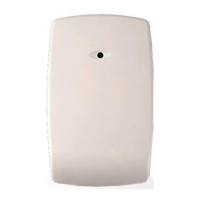
